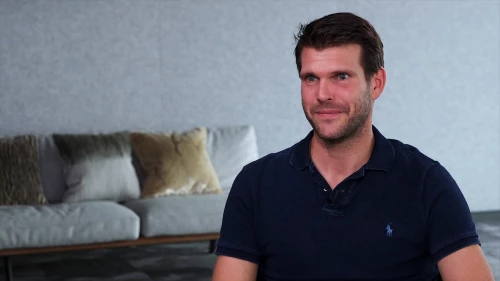As artificial intelligence (AI) goes mainstream, it is becoming integrated into the operations of traditional companies. Anheuser-Busch InBev, the largest brewer and one of the largest fast-moving consumer goods companies in the world, is one such company.
With a brewing heritage dating to 1366, Anheuser-Busch InBev is discovering that AI can help in such diverse tasks as pricing, the supply chain, and the back office. But it’s not necessarily an easy transition. As a global company, Anheuser-Busch InBev’s data—the raw material of AI—is scattered, and until recently few employees were highly skilled in AI.
That’s all starting to change.
In his role as vice president of global solutions, Tassilo Festetics has been overseeing the brewer’s global technology, analytics, and back-office operations for the past two years. His team is quickly building AI capabilities throughout the company.
Festetics recently sat down with Philipp Gerbert, a BCG senior partner and a fellow at the BCG Henderson Institute. Edited excerpts from that conversation follow.
About Tassilo Festetics
About Tassilo Festetics
Born in: Kitzbühel, Austria
Year born: 1978
Education
Master of Science, genetics and microbiology, University of Vienna
Career Highlights
2017–present, Anheuser-Busch InBev, vice president of global solutions
2015–2017, Anheuser-Busch InBev, vice president of finance
2013–2015, Anheuser-Busch InBev vice president of information and business services
2007–2013, Anheuser-Busch InBev, various positions
2005–2007, Accenture
2002–2005, Ottakringer Brauerei
Tassilo, thanks for joining us today.
Thank you very much for having me.
Could you perhaps start by commenting on the core application areas of AI?
The first point is that AI is everywhere in companies already. Most companies will have it somewhere, knowingly or unknowingly. Pricing is a great place to start. Pricing has very high returns. They’re very directly measurable. There’s a lot of data available. And then there is the back office. The back office always comes at the end because it’s not the sexiest area to look at. But I think that the entire back office in companies is going to be substantially transformed by machine learning.
How do you make change happen? How do you get the buy-in of senior management?
The answer is very easy. You show them the money. The moment you show the dollars, change becomes much easier. But without joking, that’s the best way to get there. So focusing on the initiatives that have the highest returns first will pave the way for the rest.
How did you get the team up to speed?
This is probably the most crucial part and also the most complicated part. On one side, you need to hire new resources. We are not a digital company. We are a company that’s being digitized. So we had to bring people on board that have a greater understanding of AI. But we are also training the people we already have. For example, I took my whole team last year to Berkeley, and we spent a week on just machine learning and artificial intelligence.
In our research, we have observed that building individual AI use cases is the easy part. The hard part is to scale AI across a company. So what do you see as the core challenges?
The first one is access to data and data availability. Our company has been on a very long journey of mergers and acquisitions, so our data landscape is extremely fragmented. And you mentioned the second one before. It’s basically getting the resources and the capabilities in place to be able to run algorithms.
During that program, which of your actions proved most important?
We went to India very early on. We started to hire the right talent, building capabilities that we didn’t have. Engagement with universities was also important. We worked a lot with MIT, obviously, but also with universities in India. You need to be able to build a brand so that you can recruit the right resources you need.
With hindsight, what you would have done differently?
I would have invested much earlier in these capabilities. I would have spent much more time on data up front. If you look at most of the projects that we are running, the data scientists spent 60% to 70% of their time on data acquisition, which is a huge loss of time. But that comes from a very fragmented data landscape.
What were actually your biggest surprises?
Many companies locate their back office in big towers where thousands of people are doing transactions. If we fast-forward five to ten years, these big towers will not be there anymore. These big towers will be replaced by a handful of engineers that will basically tweak algorithms.
How do employees perceive the AI program, and how do you potentially address their concerns?
I think this is obviously very different at different levels. Of course, there are concerns. Just think about the point that I mentioned about the back office. I truly believe that the back office is totally going to be revolutionized, but it’s very hard to go in front of my team that runs the back office and say, “Wow. I believe that the back office will disappear.” First of all, I don’t think that people will lose their jobs. Their jobs are going to be transformed. You really need to go through a process of education so people are not afraid and understand that their jobs are evolving. It is basically creating awareness about what is happening—the transformation that is actually happening—and demystifying it for people.
Let’s change perspective. What could Anheuser-Busch InBev actually learn from other companies?
One thing that I think we haven’t figured out is the career path for people who are working in the field of artificial intelligence. We are asking ourselves, “How do we design the career path for these people? How do we make sure that these people don’t leave us immediately but see opportunities to grow in our company without needing to change their jobs constantly?”
Can you give us an example of how AI helped in your supply chain?
We run 400 breweries across the world. They’re really manufacturing sites. They have a lot of motors, and what happens to motors is they just break. They’re not like people, who might have a headache before they get sick. They just break. Once they break, your entire supply chain stops, and you need to replace the motor.
We found a company that had a device that listens to motors and learns the baseline noise of the motors. Some motors have five different noises before they break. The device basically listens to your machine, and the moment it starts to go outside of the baseline, you know your motor is starting to have a headache. So before it gets sick and breaks, you can repair or replace the motor.
Tassilo, thanks a lot for sharing your thoughts and experience at Anheuser-Busch InBev. Let me wish you lots of success in your program going forward. Thank you.
Thank you very much for having me.
The BCG Henderson Institute is Boston Consulting Group’s strategy think tank, dedicated to exploring and developing valuable new insights from business, technology, and science by embracing the powerful technology of ideas. The Institute engages leaders in provocative discussion and experimentation to expand the boundaries of business theory and practice and to translate innovative ideas from within and beyond business. For more ideas and inspiration from the Institute, please visit Featured Insights.





